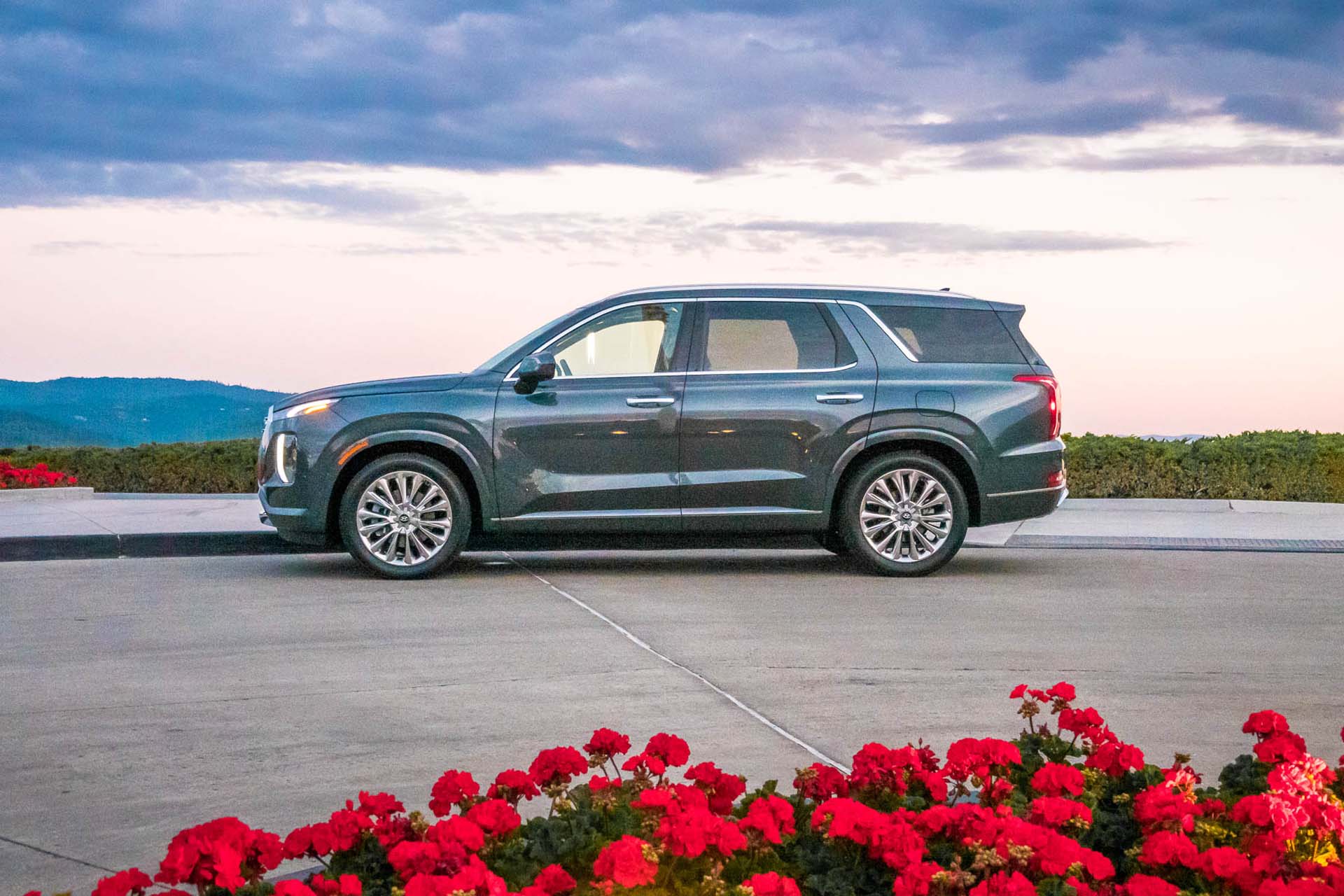
Even if the 2020 Hyundai Palisade’s best feature is its available space, none of the big crossovers are poorly equipped.
Hyundai offers the Palisade in SE, SEL, and Limited varieties with top models piling on luxury features. All are equipped with at least an 8.0-inch touchscreen with Apple CarPlay and Android Auto compatibility, active safety features that we cover above, superlative warranty, and good features for its relatively low price. It’s a 9 on our scale. (Read more about how we rate cars.)
Hyundai charges about $32,500 for a base SE with front-wheel drive and includes 18-inch wheels, automatic emergency braking, active lane control, seats for eight, cloth upholstery, and an 8.0-inch touchscreen for infotainment. Adding all-wheel drive adds $1,700 to the bottom line of any Palisade.
We say there’s better value in the SEL trim level that adds blind-spot monitors, keyless ignition, and captain’s chairs for a no-cost swap for less than $35,000. Options packages on the SEL go further with bigger, 20-inch wheels, a wireless phone charger, parking sensors, a load-leveling rear suspension, power rear liftgate, and second-row USB power ports for $2,200. More options for Palisade can add leather upholstery, power folding second and third rows, a 10.3-inch touchscreen, and dual-panel sunroofs for more money.
At the top, the Palisade Limited costs nearly $46,000 and adds all of the above, including Harman Kardon audio, heated and cooled first- and second-row seats, seven USB ports for all three rows, nappa leather, a 12.3-inch digital instrument cluster, an automatic speed limiter for highways, a surround-view camera system, and a head-up display.
All Palisades are covered by Hyundai’s 5-year/60,000-mile comprehensive warranty, which is generous among competitors, and a 10-year/100,000-mile powertrain warranty.
Palisade infotainment
Hyundai’s standard 8.0-inch touchscreen and optional 10.3-inch touchscreen offer seamless Apple CarPlay and Android Auto compatibility that spans the entire screens and connects to the car’s wired USB port.
Hyundai’s native infotainment system is richer, with more common-sense software for families than either smartphone-based systems, but requires some learning. We’ve extensively used the 10.3-inch touchscreen with navigation and it’s responsive, albeit cluttered. Swiping through the menus and icons is quick, but changing vehicle settings can be confusing at first. Hyundai offers three years of its smartphone service on Limited (optional on SEL) versions that can start the car, condition the cabin, send directions to the navigation, among other tasks.
A “quiet mode” that silences rear-seat speakers for sleeping passengers is standard on all models and was effective in our tests. Top trims get a voice-projection system that uses the Bluetooth microphone in the front seats to project the front-seat riders’ voices through speakers to yelling children in the rear.
Review continues below
0 Kommentarer